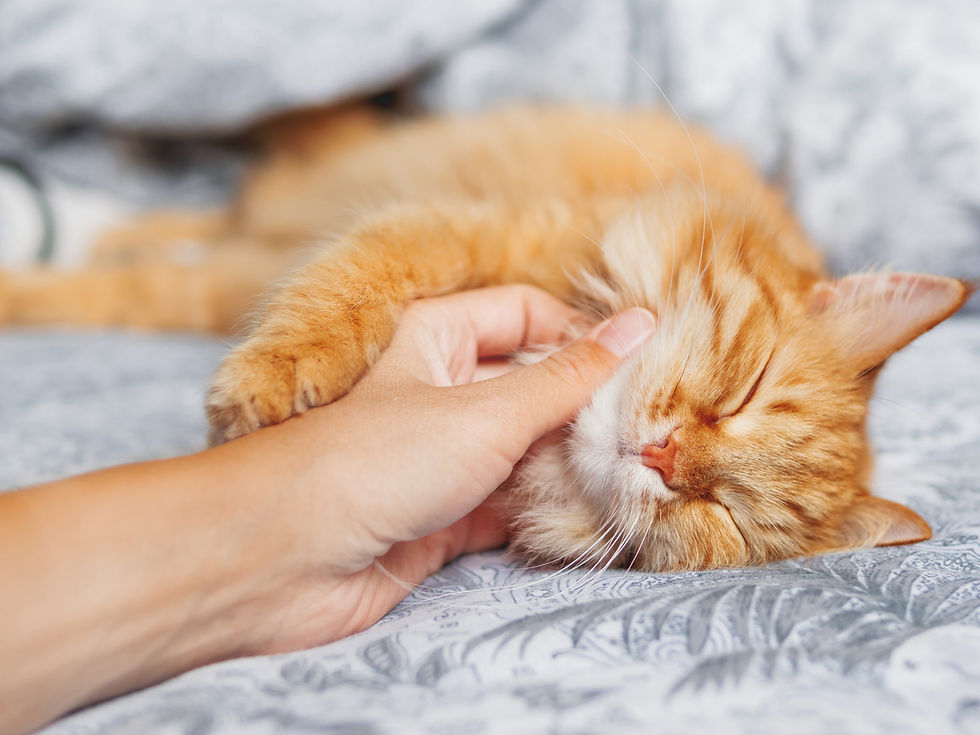The Science Behind Cat Purring: More Than Just a Soothing Sound
- Scribbles

- Aug 19, 2024
- 3 min read
Updated: Nov 3

Purring is one of the most recognizable sounds cats make, often associated with contentment and relaxation. However, there is much more to this soothing sound than meets the ear. Science reveals that purring serves multiple purposes for both cats and humans. Let's explore the fascinating world of feline purring and uncover the mysteries behind why cats purr.
1. Why Do Cats Purr?
While purring is often a sign of a happy cat, it can have various meanings depending on the context. Cats purr when they're comfortable and feeling affectionate, but they also purr in other situations, such as when they are anxious, in pain, or even during childbirth. This suggests that purring is a complex form of communication and self-soothing mechanism that serves different purposes.
2. The Healing Power of Purring
Research suggests that purring may have healing properties. The vibrations produced by a cat's purr are within a frequency range (25 to 150 Hertz) that can promote healing in bones and tissues. Studies have shown that exposure to sound frequencies in this range can increase bone density and promote tissue regeneration. This could explain why cats often purr when injured or recovering from illness; it might be their way of self-healing!
3. Purring as a Stress Reliever
For cats, purring can be a way to calm themselves in stressful situations. For instance, cats might purr while visiting the vet or in unfamiliar environments. This type of purring is believed to be a form of self-comfort, akin to a child sucking their thumb. Similarly, when humans hear a cat purr, it often has a calming effect, reducing stress and lowering blood pressure. In this way, purring is a mutually beneficial interaction between cats and their owners.
4. Purring and Social Bonding
Purring also plays a vital role in strengthening the bond between a cat and its human. When a cat purrs during petting or cuddling, it creates a positive feedback loop, encouraging further affection and attention. This interaction is not only enjoyable but also essential for building trust and deepening the human-feline bond.
5. The Mechanics of Purring
How do cats purr, exactly? The mechanics of purring involve the rapid twitching of muscles within the larynx (voice box). As these muscles move, they cause a sudden separation of the vocal cords during both inhalation and exhalation, resulting in the characteristic purring sound. Interestingly, not all cats can purr. The ability to purr is found in most domestic cats and some wild cats, but big cats like lions and tigers do not have this ability due to differences in their vocal anatomy.
6. Purring in Other Species
While purring is most commonly associated with cats, other animals, such as some species of foxes, raccoons, and even guinea pigs, can purr as well. However, the reasons for purring in these animals are not as well understood and may differ from the functions seen in cats.
Purring is a unique and multifaceted behavior that extends beyond a simple expression of happiness. It serves as a form of communication, a self-healing mechanism, and a tool for social bonding. Understanding the science behind purring allows us to appreciate our feline friends even more and strengthens the bond we share with them. So, the next time your cat curls up on your lap and begins to purr, remember there’s more to that sound than just contentment—it’s a testament to the fascinating complexity of cats.






Comments